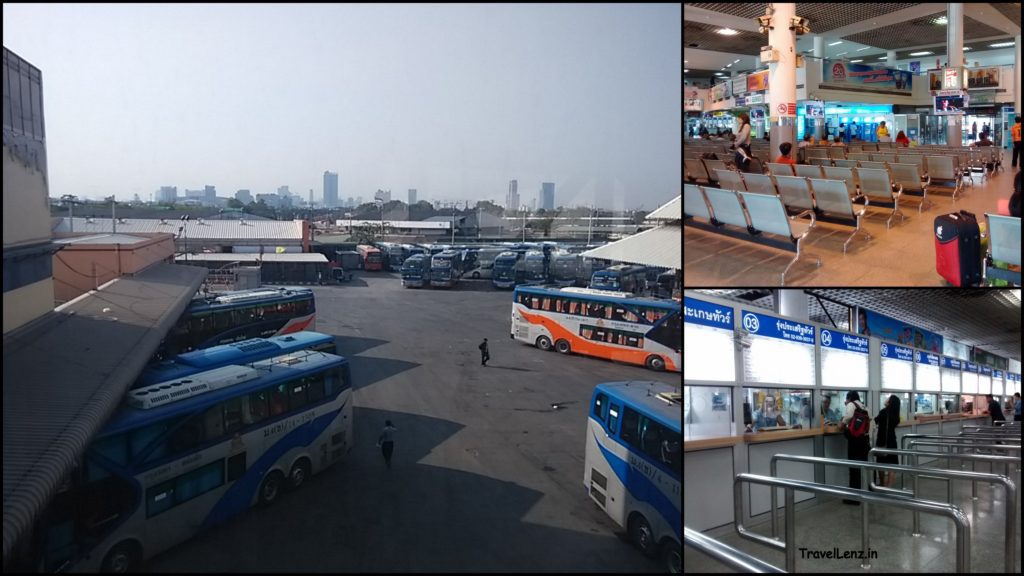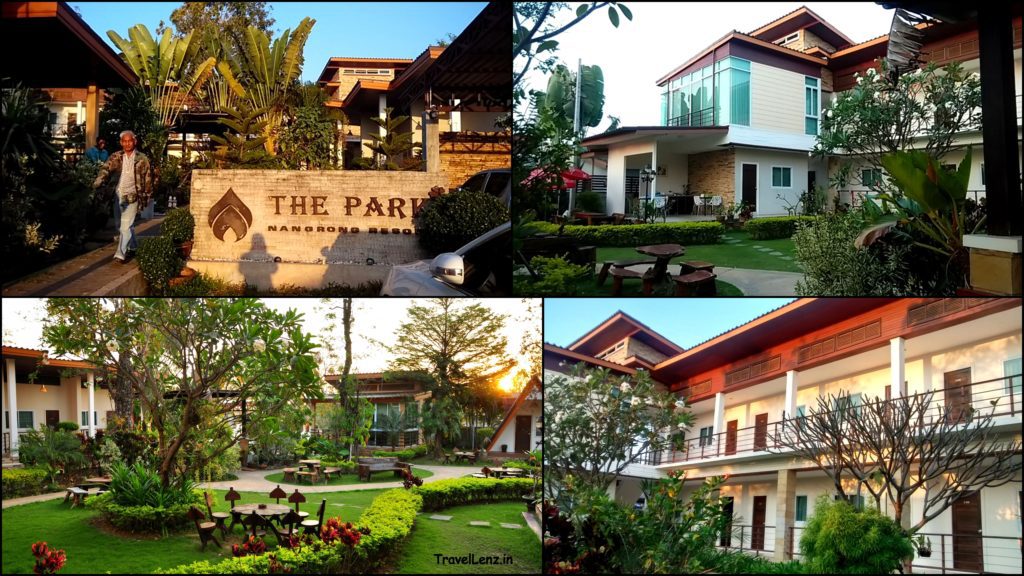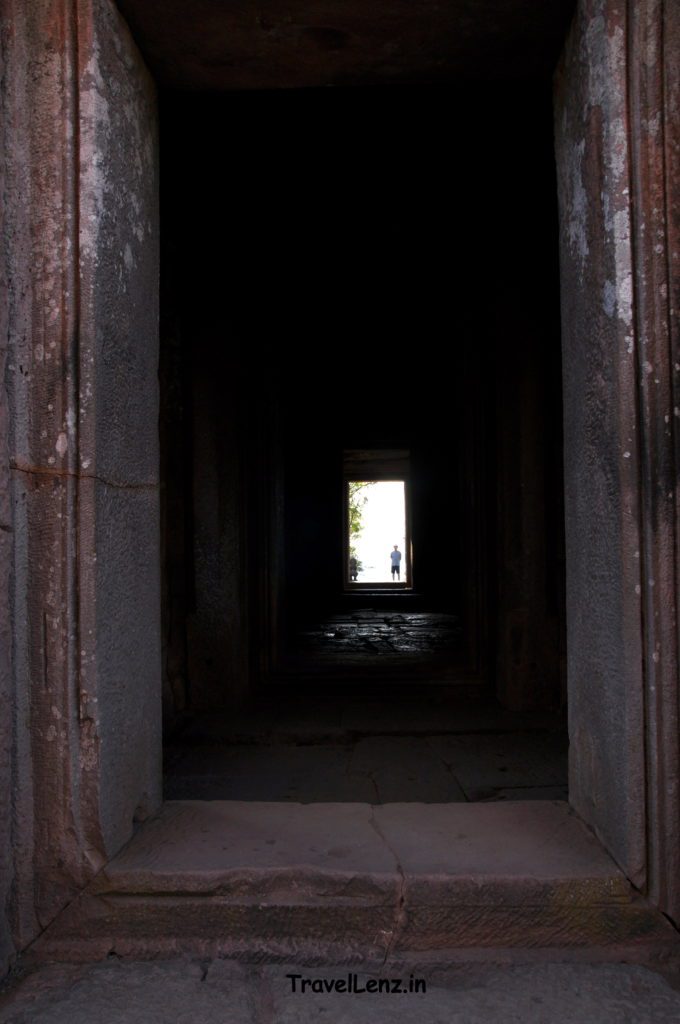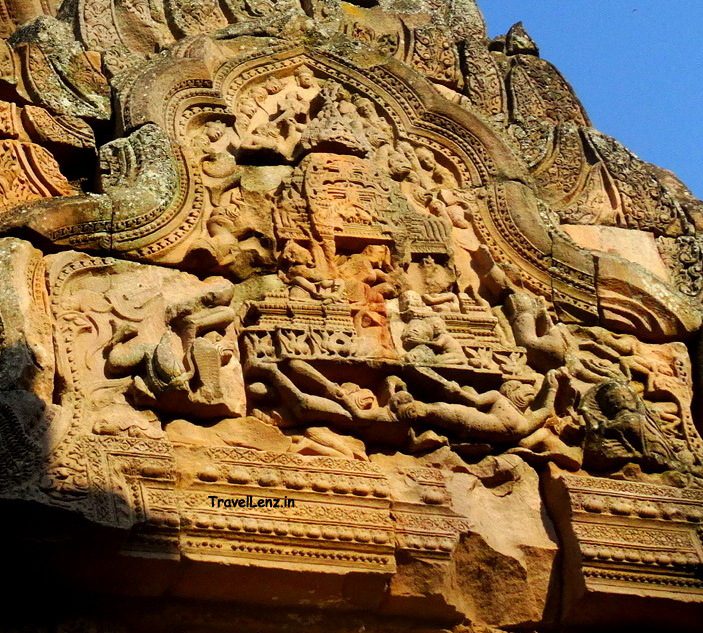Last Updated on January 15, 2021
Back in the 9th century AD, when there was no Thailand and no Cambodia (as it were) – the Khmer dynasty ruled over the region that today encompasses Cambodia, Laos, Southern Vietnam and Eastern Thailand. Across their empire, the Khmer built a large number of temples that were dedicated to the Hindu God Shiva. In Thailand, two temple clusters, in particular, are impressive and tell the Khmer heritage story just as well. The first of these, Phanom Rung and the nearby Prasat Muang Tam, lie just 50 km from the Cambodian border. The second, Phimai, is about 130 km further north-west.
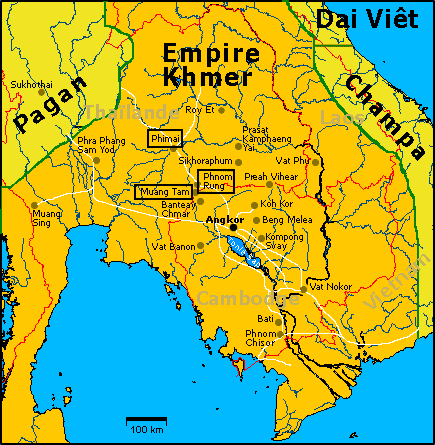
Mo Chit to Nang Rong
We had left the hustle and bustle of Bangkok and were sitting back in a comfortable bus, watching the city’s traffic and the commercial district melt into the countryside.
We were headed for Nang Rong in Buriram, 350 km away towards the east, and a comparative tourist wilderness when compared to the city of angels. An hour ago, we had caught the MRT to the Mo Chit station and a half-hour taxi ride dropped us off at the Mo Chit bus terminal – the exit point to destinations to the north and east.
As a run-up to our upcoming Cambodia (read Siem Riep and the Angkor park) trip, we wanted the mood to be set right in Thailand. It was the Khmer monuments in the Isaan region of north-eastern Thailand that we wanted to get up close to. And for a good reason. The destinations we were headed for was a little know heritage circuit that has much more prominence and beauty than it currently enjoys.
Also read: How we planned our four-day itinerary for Angkor Wat?
Our destination was Nang Rong, the nearest town to the Phanom Rung historical park complex. We had to be the only tourists on the bus. The others were all locals, heading home or on other businesses.
At Nang Rong
About 6 hours and 340 km into the drive (and a pit stop later), we had pulled into Nang Rong town – the gateway to the fascinating Khmer heritage circuit that, across the border, blooms into the sublime Angkor complex 300 odd km away in Siem Reap, Cambodia.
It was at the bus terminus at Nang Rong that we first felt we were really in a foreign country.
Not that the Thais, as people, are not friendly. If anything, they are some of the most friendliest. It was more of our lack of the Thai language that made us feel that way. Anyway, we were lucky to find a gent who had a cab and before long he dropped us off at our resort, The Park.
Destination Phanom Rung
In half an hour, after having checked in, we were back on the road in his cab.
Back at the hotel, they had urged us to start early if we had to make the most of the evening. The ruins would close by 6 pm. So we had to leave immediately, and we did in the same car.
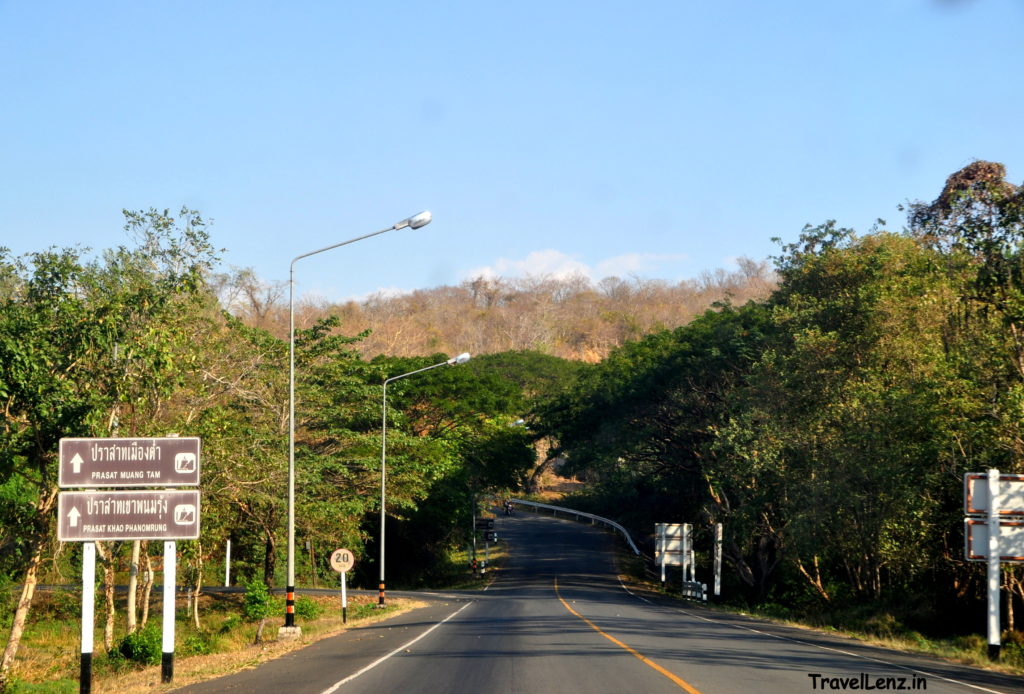
We sped past the neat and well laid out Nang Rong town and into the wilderness that hid the beautiful complex we had travelled so long to see – Phanom Rung Historical Park.
At the entrance gates
There were three entrance gates to Phanom Rung. We used the main one which is Gate no.1. Vehicles take this route and there is an expansive car parking area just outside the tourist information centre and the ticket counter. There were also shops that sold snacks and souvenirs.
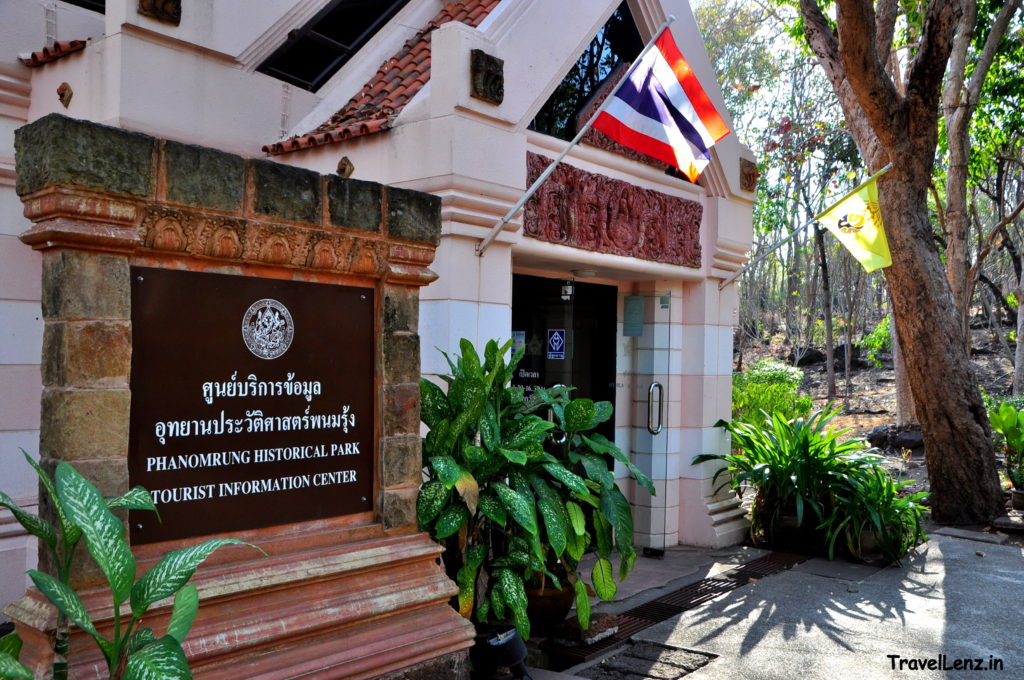
Built in the 12th century AD over a dormant volcanic region at a height of 400 m, Phanom Rung, locally known as the Prasat Hin Phanom Rung is dedicated to Lord Siva and symbolizes Mount Meru. The complex is built with sandstone and laterite.
We paid for a combined entry ticket for both Muang Tam and Phanom Rung. Just for Phanom Rung, the ticket costs THB 100 (THB 30 for Thai nationals). However, a THB 150 combined ticket will get you access to both Muang Tam and Phanom Rung. The time was 4.20 pm and if we had to cover Phanom Rung and then reach Muang Tam before closing time, we had to be literally flying. The clerk at the ticket counter looked a bit concerned at our decision of taking a chance to see both the sites. Nevertheless, we were sure we could see both.
From the ticket office, we climbed up a set of laterite steps. Phanom Rung, we had read, had one of the grandest entrances for a Khmer temple found in Thailand.
Ceremonial pathway
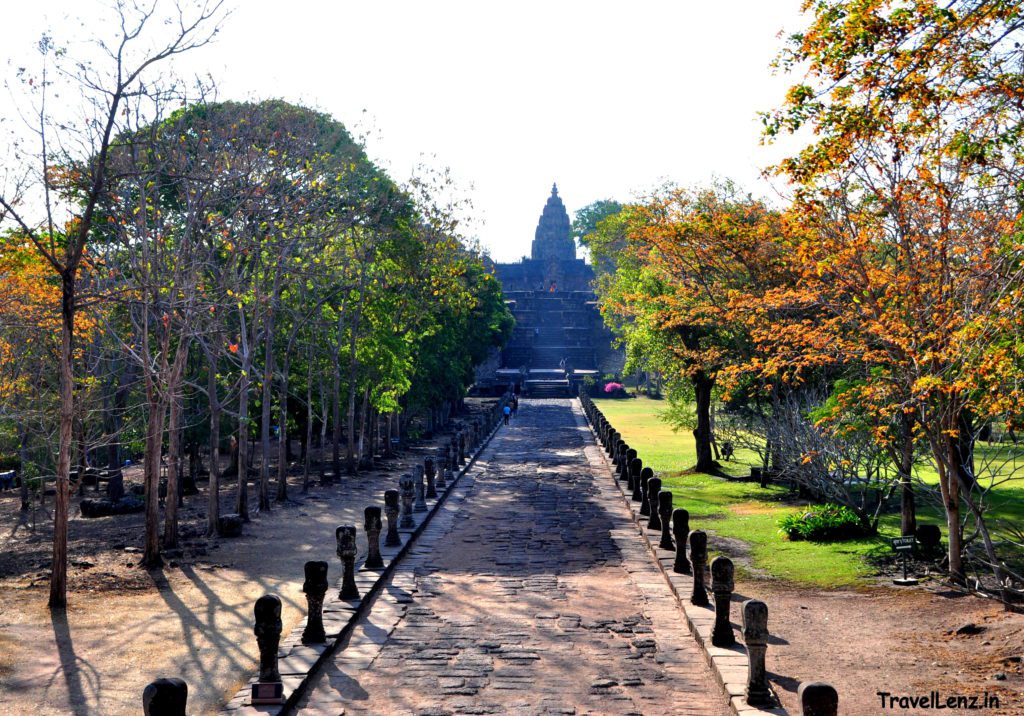
After all, this temple conjures up images of ‘the ethereal home of the Gods up in heaven’. Yes, that’s the English translation of the Khmer word, Phanom Rung. Right in front of us was a walkway, 160 m long, paved with laterite blocks and flanked by sandstone posts. From the top of the steps, the ceremonial walkway looked grand. It must have looked imposing a 1000 years ago when the Khmer Kings and the other royal members wearing colourful clothes walked down it.
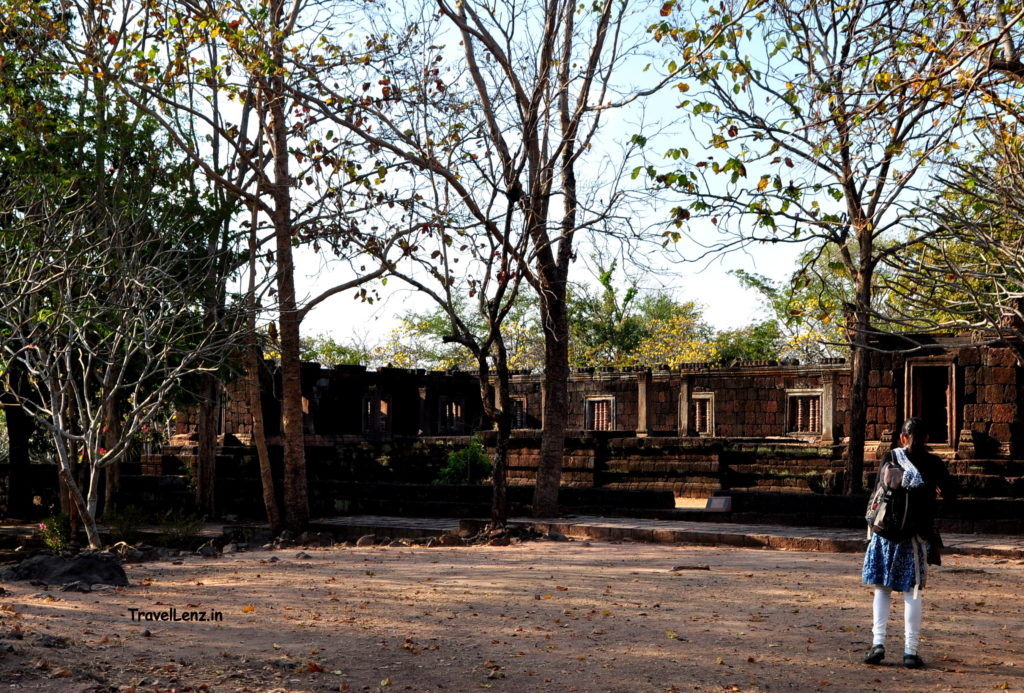
To the right of the pathway was a building, the Royal Pavilion, which was used by the kings and the royal family to change into their ceremonial clothes before entering the temple.
The first Naga bridge and terraces
Ahead, the main tower of the temple loomed over us. At the end of the walkway was a Naga bridge, the first of the three Naga bridges present in this temple complex. The balustrades of the bridge were in the form of serpents bodies raised on square columns that ended in five-headed Naga’s pointing in four directions. The bridges with multi-headed serpents slithering down the sides symbolize the connection between the earthly world and the heavenly world.
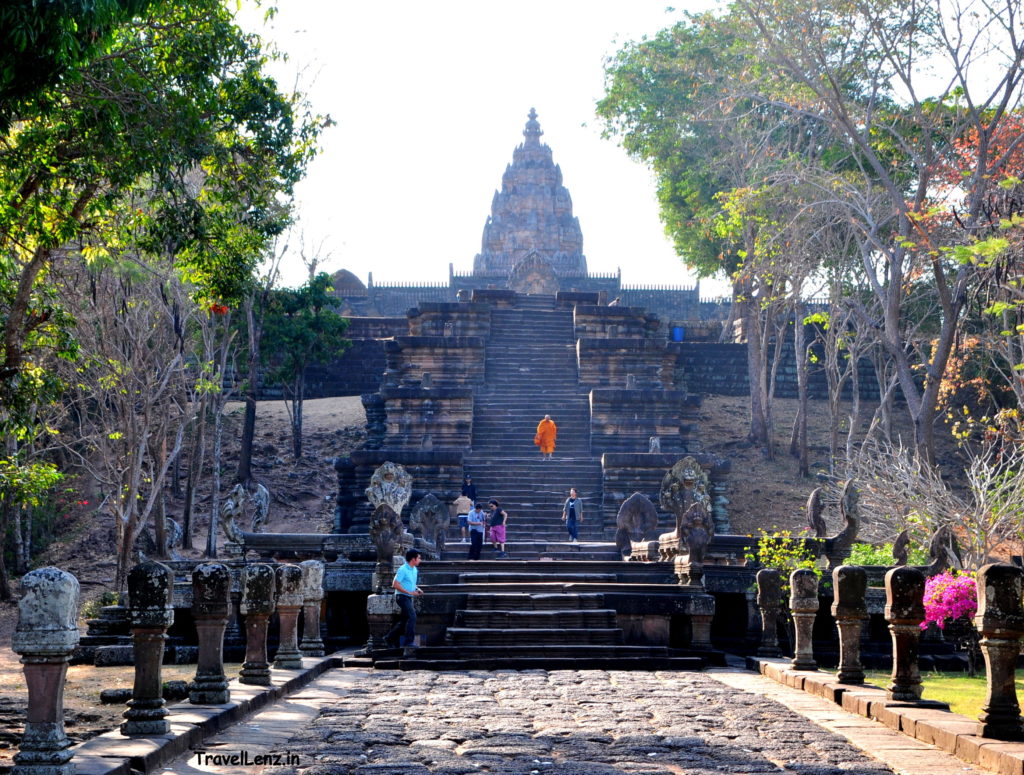
The first Naga bridge followed by five sets of laterite stairs with terraces on the side
The first Naga bridge was followed by a flight of a wide set of laterite stairs divided into five sets and with terraces on the side. From the top of the last terrace, the views of the countryside and mountains were impressive.
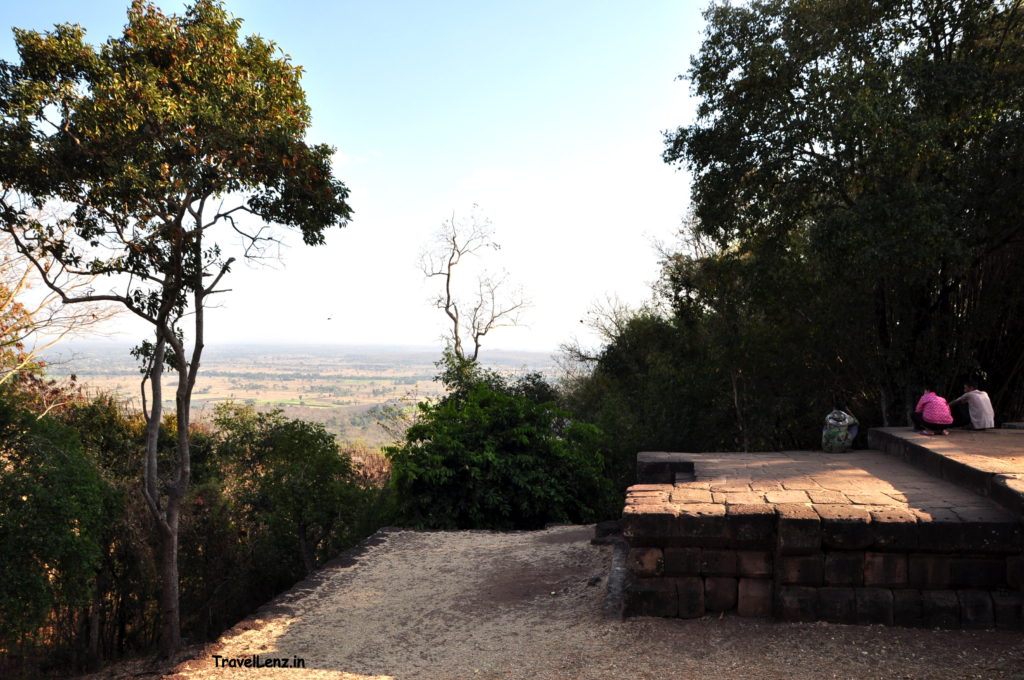
Just beyond the terrace, were four small lotus ponds. These must have been used to purify the visitors before they entered the temple. We walked along the lotus ponds to reach the eastern entrance of the temple.
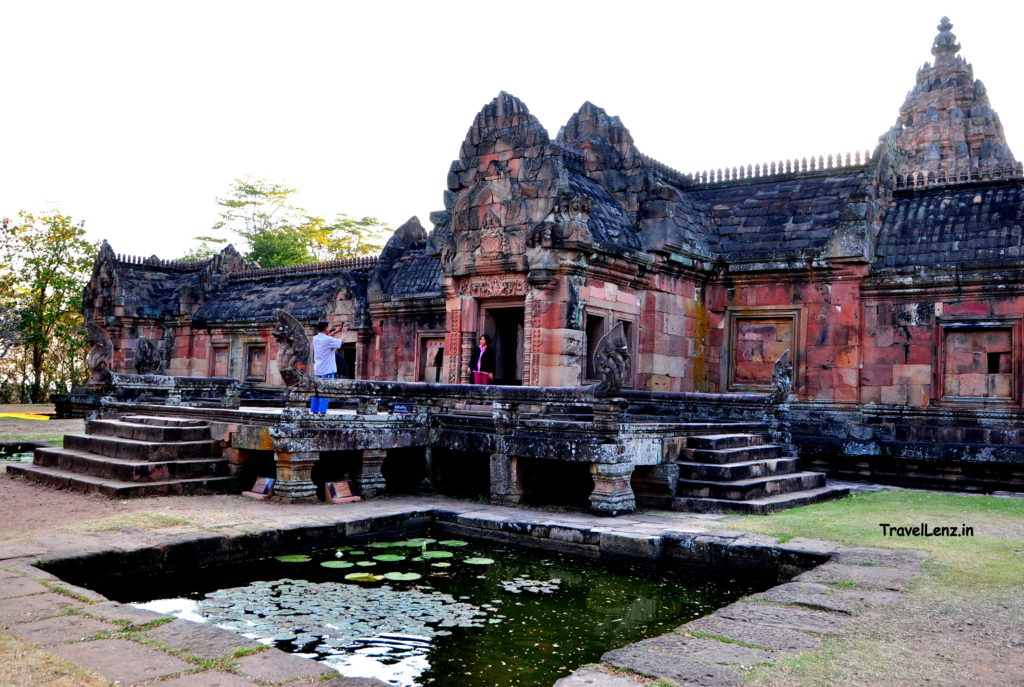
The second Naga bridge and lotus ponds
Right at the eastern entrance was the second Naga bridge. From here we climbed a few steps and entered through a large doorway. On the lintel of the doorway was a sculpture of Yogadakshinamurthy – a depiction of Lord Shiva as a Rishi with a rosary in his hand. He is supposed to have the power to heal any ailment.
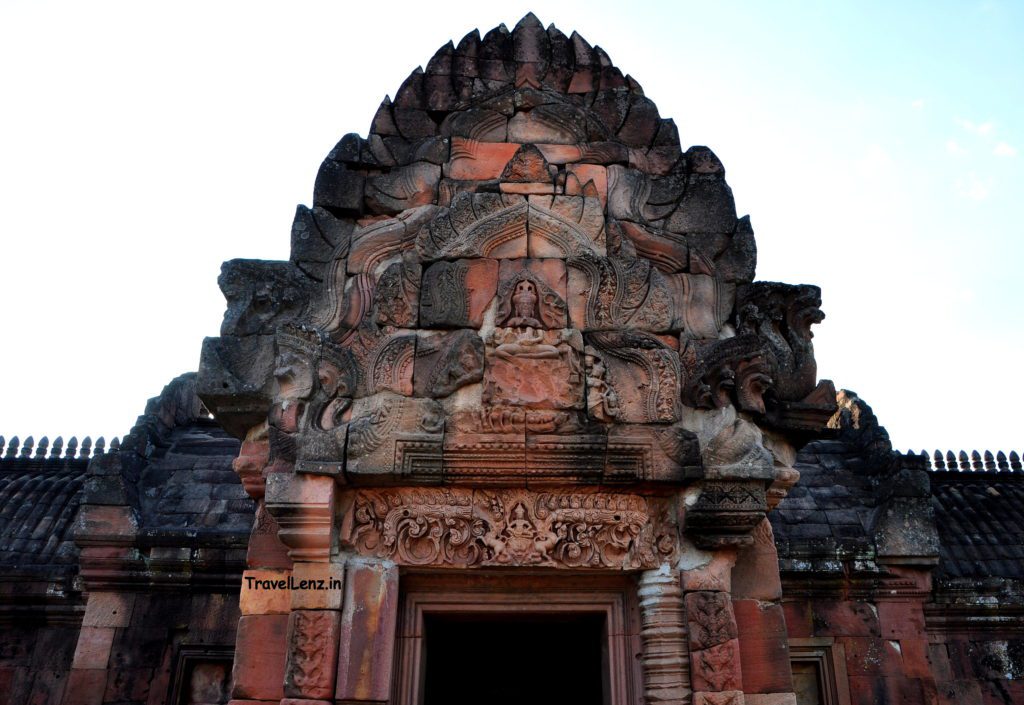
Four times a year, this temple offers a rare spectacle – the rays of the rising sun passes through the many perfectly aligned doors of Phanom Rung temple. Though it was not that time of the year we could see right through the front door and out to the other side of the temple complex.
The third Naga bridge and inner courtyard
We stepped into a long and narrow passage which led us to the third and last Nagabridge and then further onto the inner courtyard.
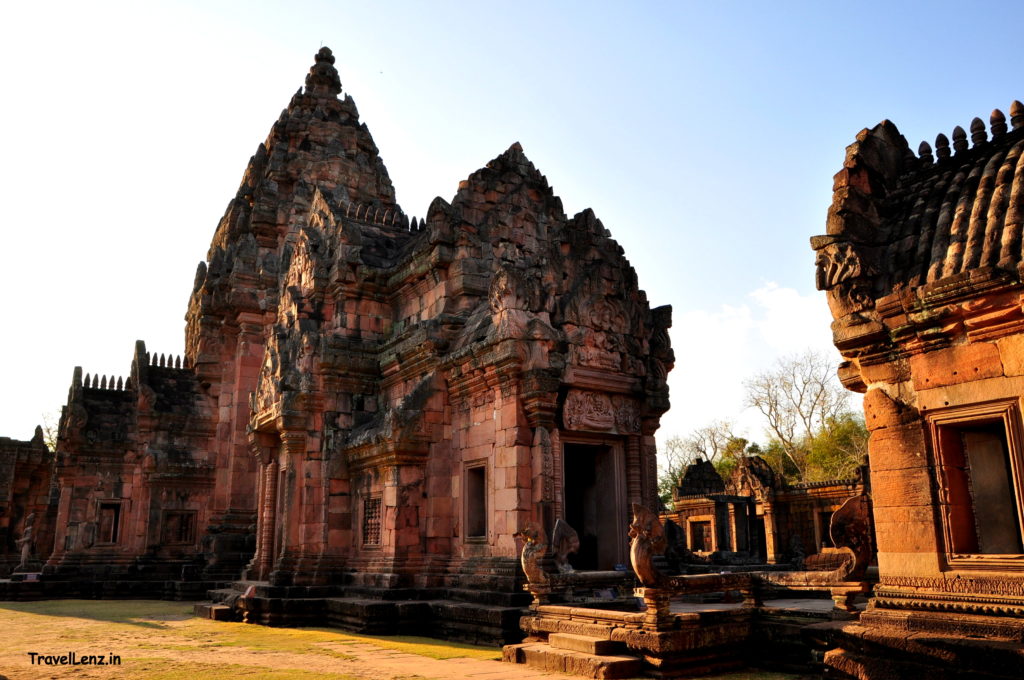
The inner courtyard had a few laterite buildings, the most impressive of them all was the main tower. It had four doorways, one on each side. There were two other smaller laterite buildings – libraries, one unfinished low tower – little Prang and the remains of two brick towers.
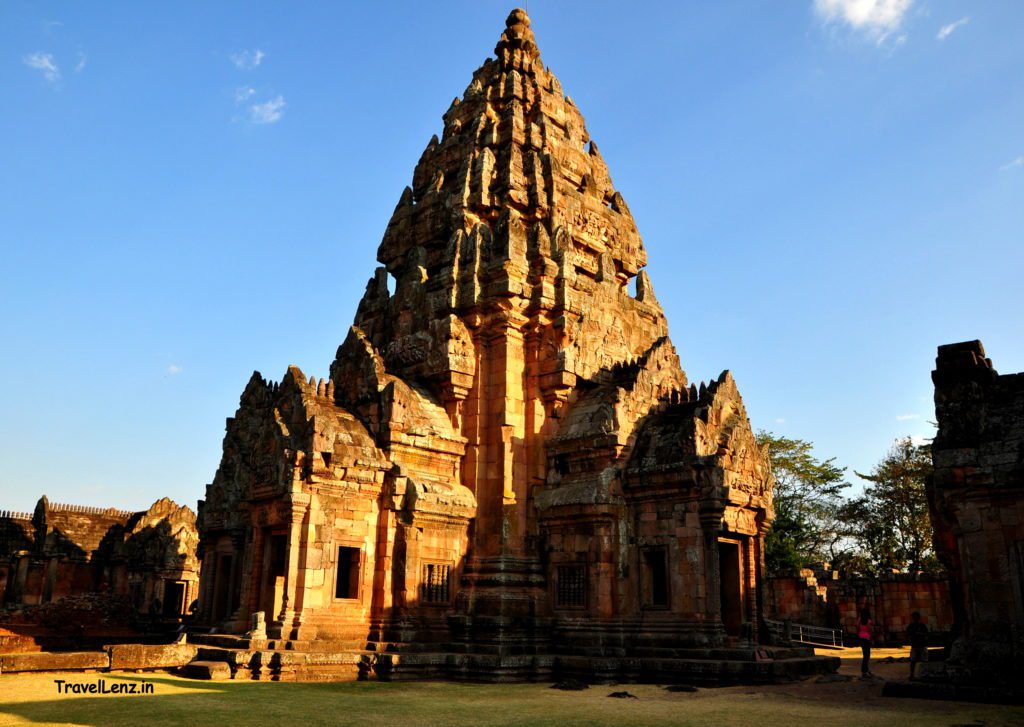
Intricate carvings
The temple’s towers, facades and lintels were resplendent with intricate carvings that told stories from the Ramayana and Mahabharatha.
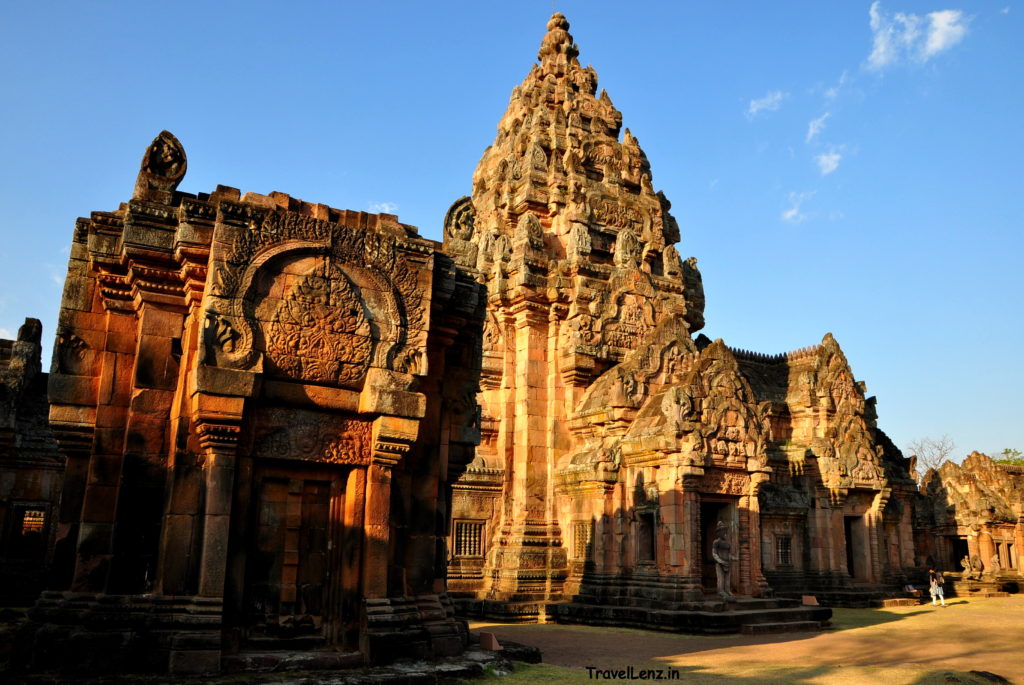
Phanom Rung’s most famous carving is that of Lord Vishnu in a reclining position. Vishnu is asleep on the mythical Naga, Ananta, dreaming up a new universe. Goddess Lakshmi, his consort (who has lost her face) sits at his feet. Growing from Vishnu’s navel is a lotus that branches into several blossoms. On one lotus sits Lord Brahma who puts Lord Vishnu’s dream into practice. In an unusual Khmer influence, there is a lion-headed dragon in front of the Naga’s head.
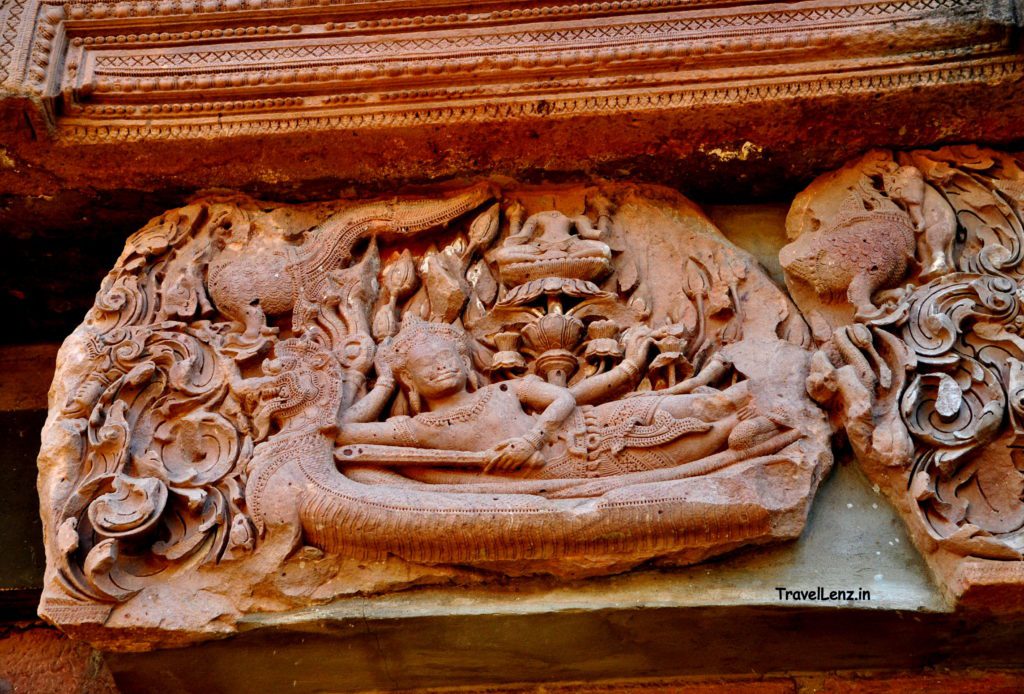
Another lintel had a dancing Shiva – Nataraja – with ten arms, nine of which were intact. He is dancing on Mount Kailash in front of several other gods, including Ganesh, Brahma and Vishnu – most of their faces are destroyed.
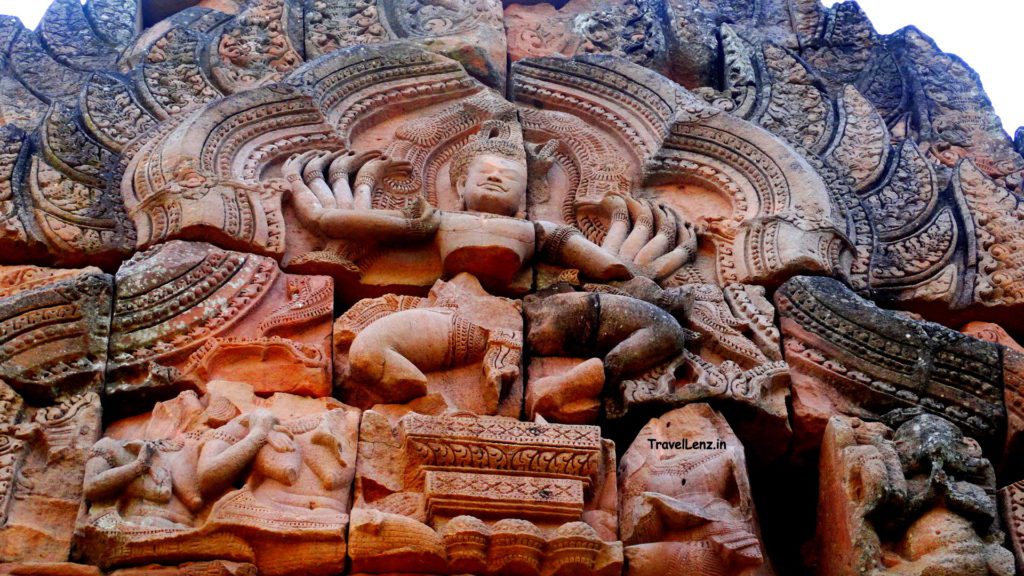
As we walked around the complex, we found many other beautiful carvings that represented stories we had grown up listening to. One panel had its upper portion covered by a carving of the demon Ravana abducting Sita. The lower portion had Krishna fighting with an elephant and a lion. Krishna had his right leg wrapped around the elephant and his left leg a lion.
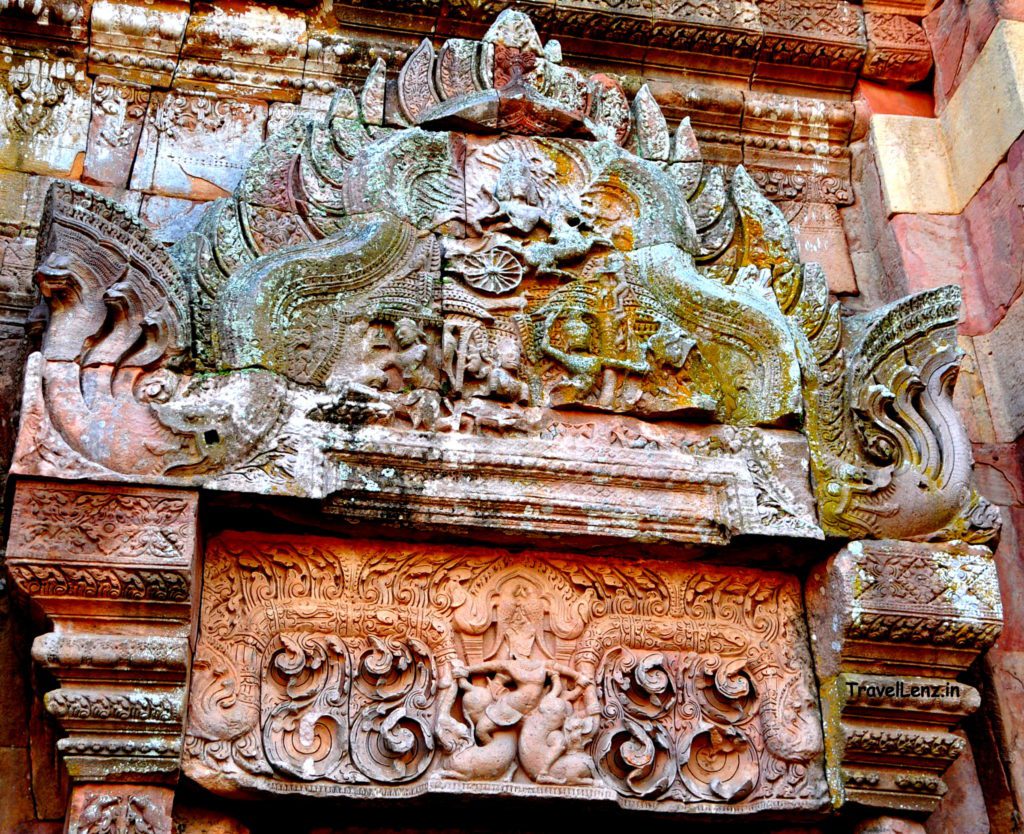
A few pediments depicted scenes of battles between Ravana’s army and the monkey army.
Inside the prang there was an almost life-size Nandi, Lord Shiva’s vehicle, kneeling beside a Shiva lingam.
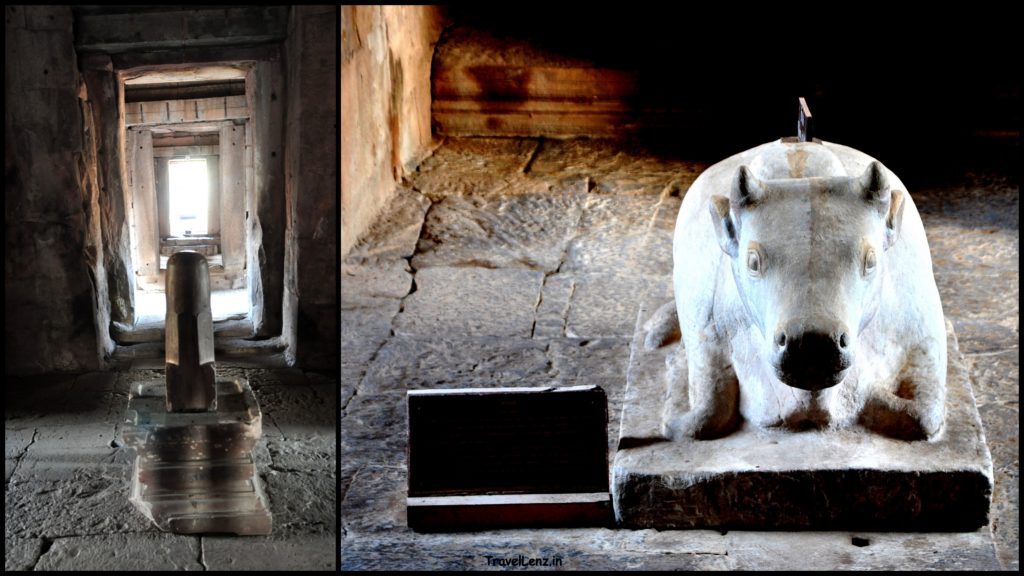
We found a lot of nuns meditating on the grounds. They looked calm and serene and as if they were experiencing something wonderful.
Destination next – Muang Tam
As the sun slanted over the domes of Phanom Rung, we hurriedly trooped down the laterite steps and were out of the complex and in the car to reach Muang Tam before it was closing time there. It was a 15 minute (7 km) drive to Muang Tam – an easy ride further southeast from Phanom Rung.
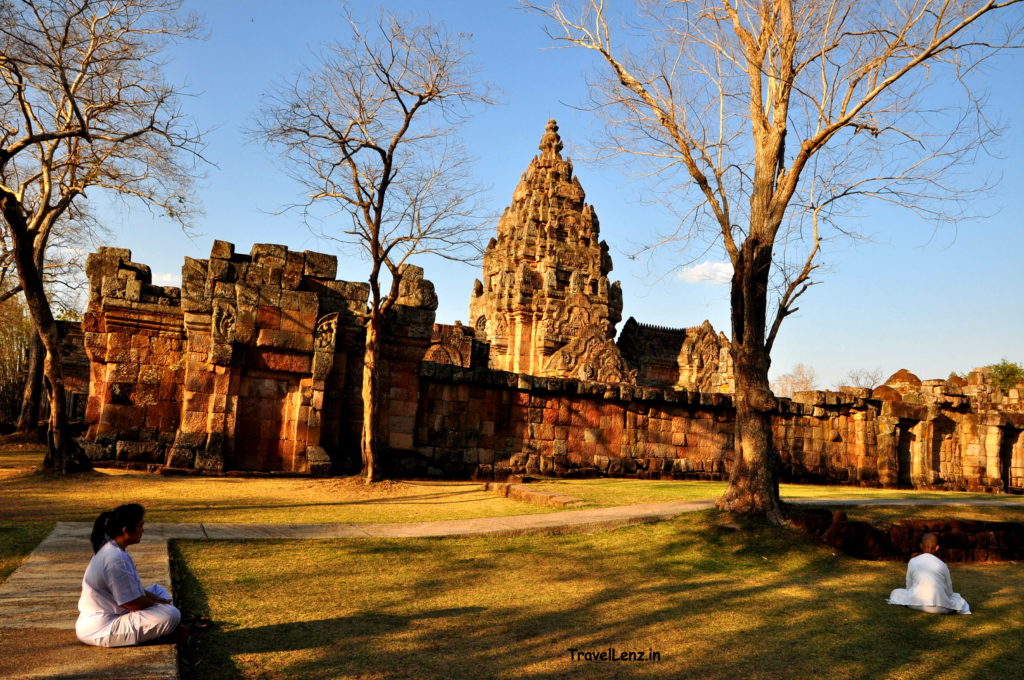
Also, we did not want to miss the serenity of Muang Tam as seen from across the pond filled with lotus flowers (we had seen a lot of pictures on the internet). More on that when we pick up that thread in our Muang Tam tale.
Read more: Our visit to Muang Tam
Good to know – Phanom Rung and Muang Tam travel information
How to reach Phanom Rung and Muang Tam
It’s best to get to Nang Rong and stay the night to catch both Muang Tam and the nearby Phanom Rung the same day.
If arriving from Bangkok, it’s a long drive of 342 km and expect to reach only by afternoon. Buses (fairly luxurious and with a packed mini-lunch) start from Mo Chit terminal. Try and get to your hotel in Nang Rong quickly and catch a cab soon to make it Phanom Rung by about 3 pm. There are no scheduled public bus services from the town to either of the ruins. You could hire a motorbike from the resort you are staying at or from the market. Cycling is possible but prepare for a 30 km ride, albeit on a very good road, with sparse traffic. Muang Tam is a 7.5 km further down. So, that will be 75 km to and fro – the physical effort apart, consider the time it will take and leave you with for walking around both the ruins before they close for the day.
If coming from Nakhon Rathasima (Khorat), it’s just 111 km to Nang Rong by bus or minibus. This will give you the whole day to catch both Phanom Rung and Muang Tam and still be back if you don’t want to stay the night at Nang Rong.
From Ayutthaya, Nang Rong is a longish ride at 293 km. Target to start early as you would from Bangkok.
Temple timings
The temples are open from sunrise to sunset. That will be 6 AM to 6 PM. To view the ruins in near solitude, weekdays are the best. Be prepared for some boisterous crowd on weekends and public holidays.
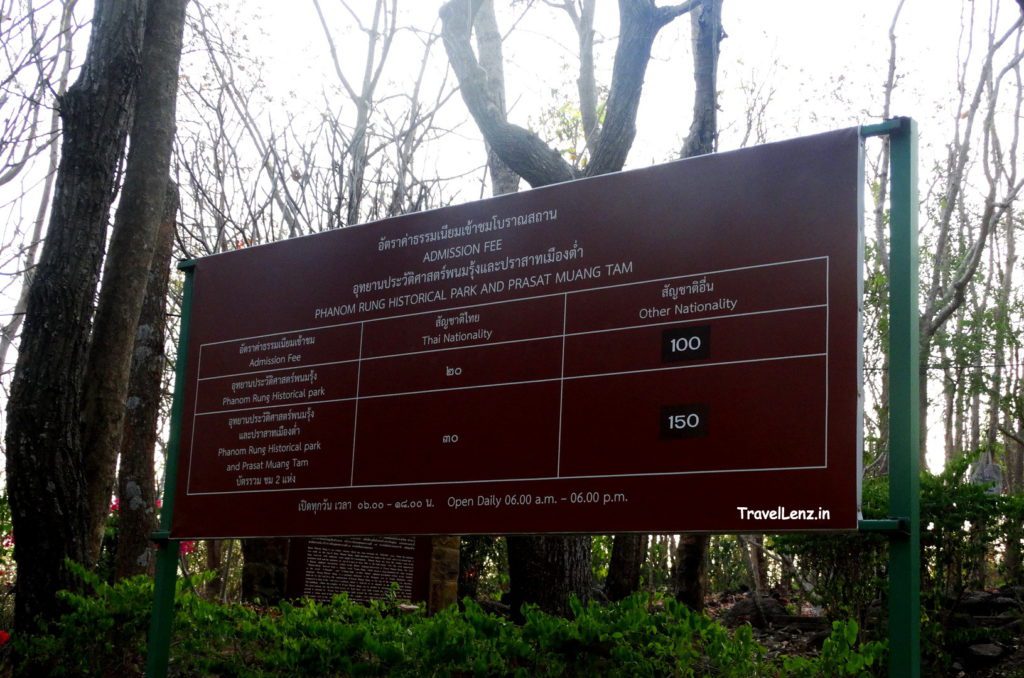
Entrance fees
Just for one temple, the ticket costs THB 100. But a THB 150 combined ticket will get you access to both Muang Tam and Phanom Rung. Thai citizens only need to pay THB 30 for this ticket.



